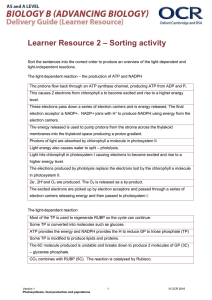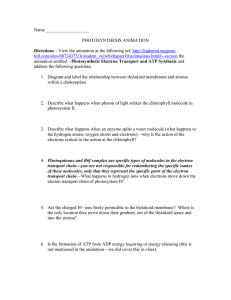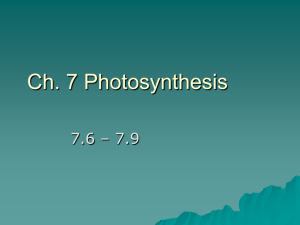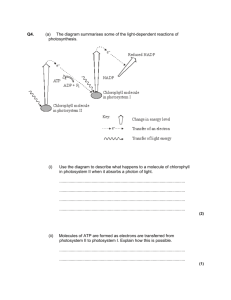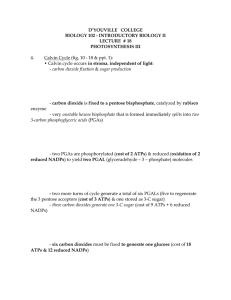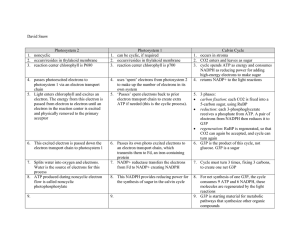advertisement
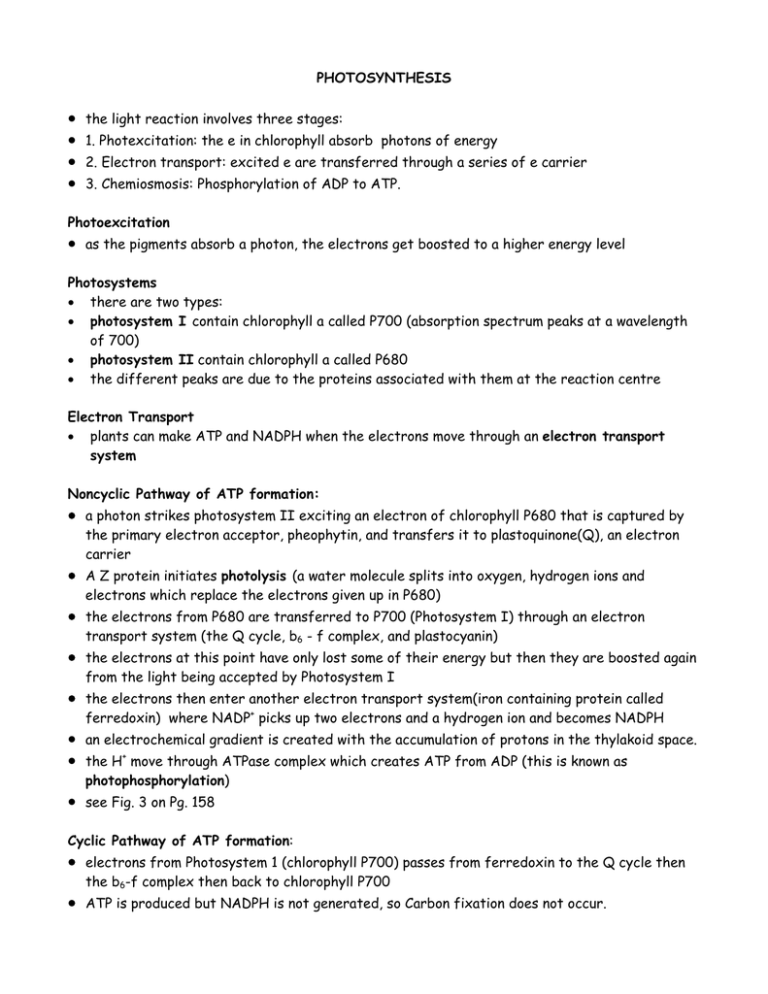
PHOTOSYNTHESIS the light reaction involves three stages: 1. Photexcitation: the e in chlorophyll absorb photons of energy 2. Electron transport: excited e are transferred through a series of e carrier 3. Chemiosmosis: Phosphorylation of ADP to ATP. Photoexcitation as the pigments absorb a photon, the electrons get boosted to a higher energy level Photosystems there are two types: photosystem I contain chlorophyll a called P700 (absorption spectrum peaks at a wavelength of 700) photosystem II contain chlorophyll a called P680 the different peaks are due to the proteins associated with them at the reaction centre Electron Transport plants can make ATP and NADPH when the electrons move through an electron transport system Noncyclic Pathway of ATP formation: a photon strikes photosystem II exciting an electron of chlorophyll P680 that is captured by the primary electron acceptor, pheophytin, and transfers it to plastoquinone(Q), an electron carrier A Z protein initiates photolysis (a water molecule splits into oxygen, hydrogen ions and electrons which replace the electrons given up in P680) the electrons from P680 are transferred to P700 (Photosystem I) through an electron transport system (the Q cycle, b6 - f complex, and plastocyanin) the electrons at this point have only lost some of their energy but then they are boosted again from the light being accepted by Photosystem I the electrons then enter another electron transport system(iron containing protein called ferredoxin) where NADP+ picks up two electrons and a hydrogen ion and becomes NADPH an electrochemical gradient is created with the accumulation of protons in the thylakoid space. the H+ move through ATPase complex which creates ATP from ADP (this is known as photophosphorylation) see Fig. 3 on Pg. 158 Cyclic Pathway of ATP formation: electrons from Photosystem 1 (chlorophyll P700) passes from ferredoxin to the Q cycle then the b6-f complex then back to chlorophyll P700 ATP is produced but NADPH is not generated, so Carbon fixation does not occur. see Fig. 6 on pg. 160 the atmosphere as we know it today evolved from aquatic plants the accumulation of this oxygen changed the atmosphere and made it possible for aerobic respiration to emerge recall the bubbles that come off the leaves of aquatic plants; they represent the production of oxygen Seatwork Pg. 166 # 1 - 8
